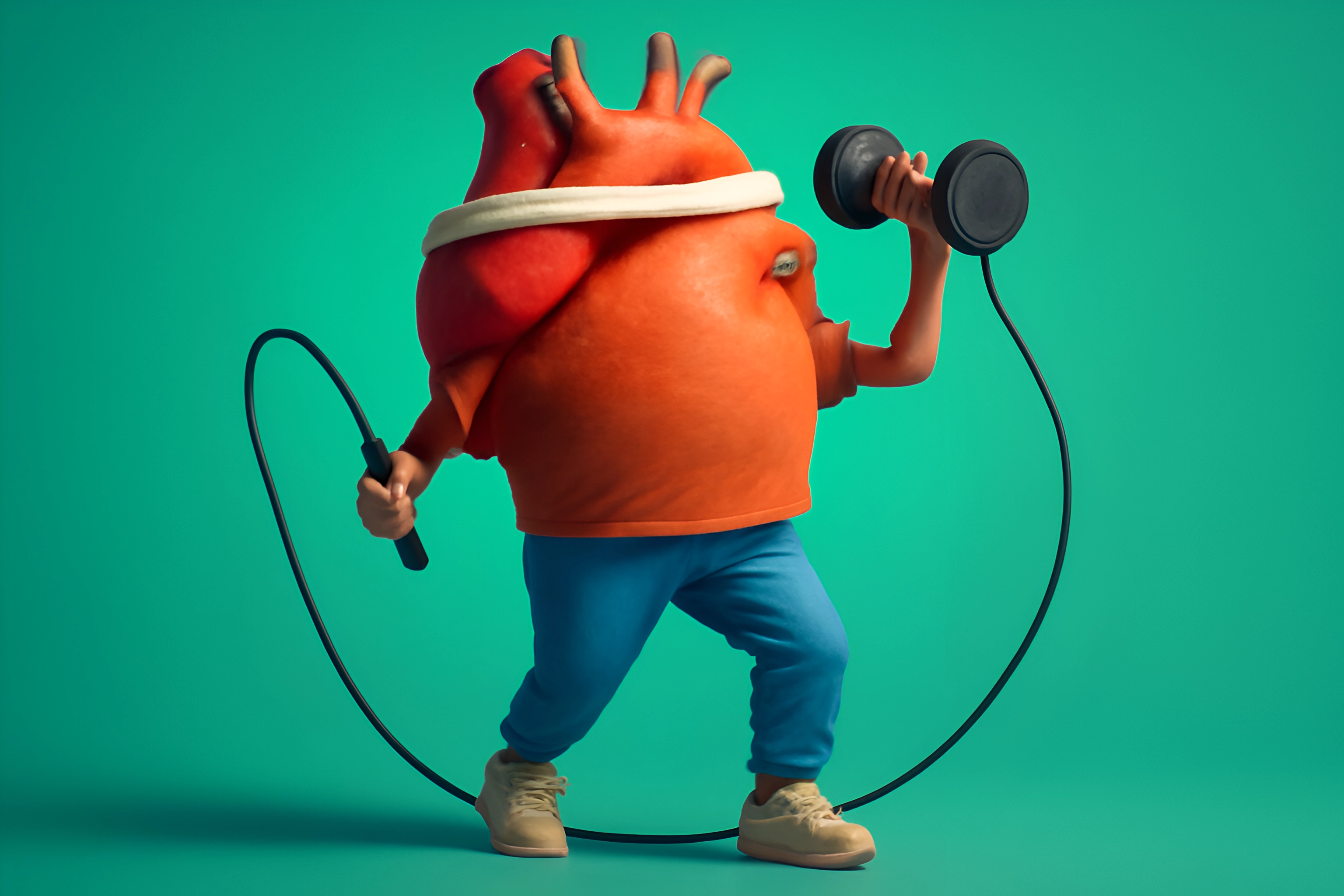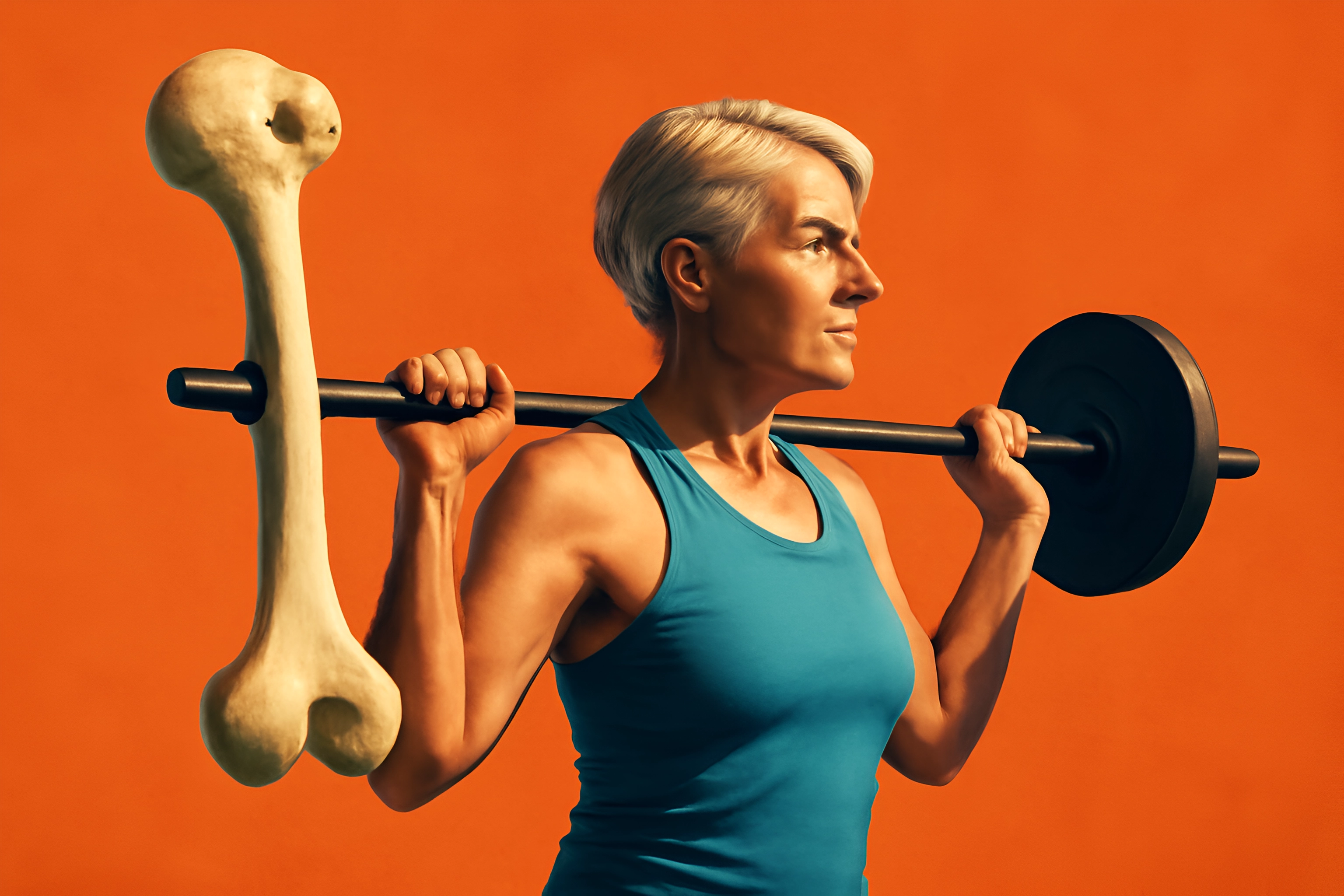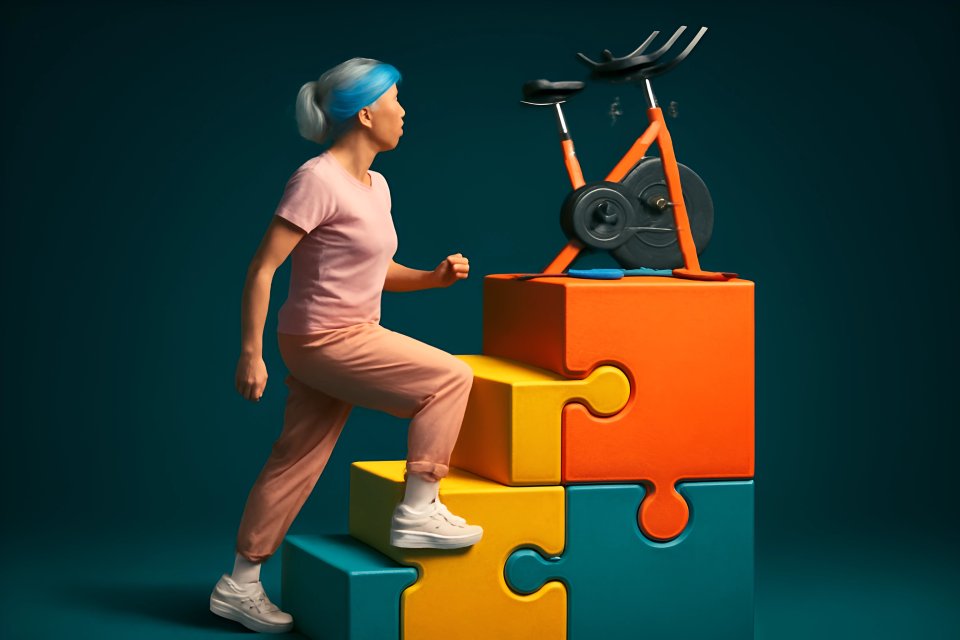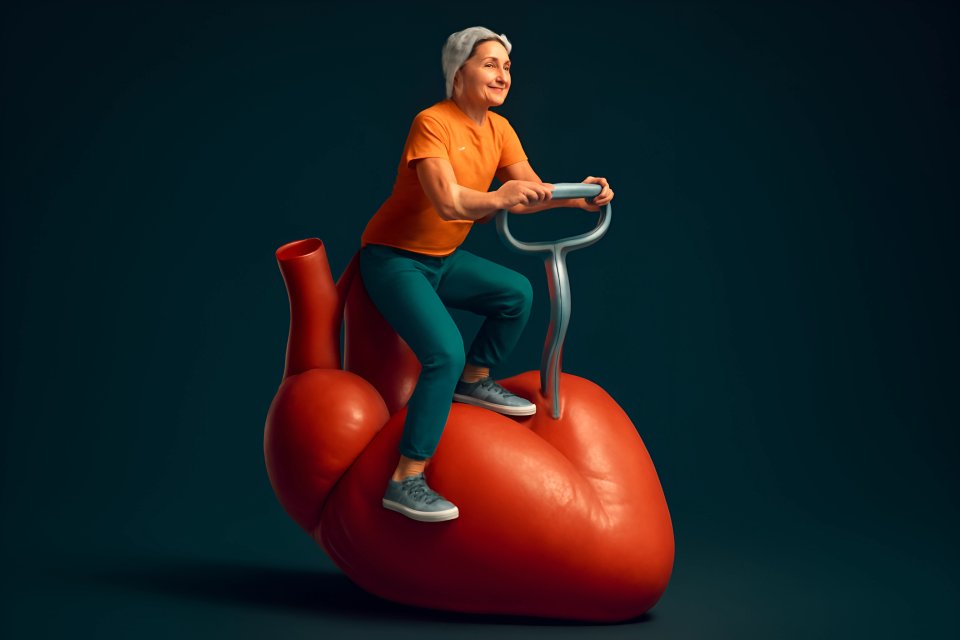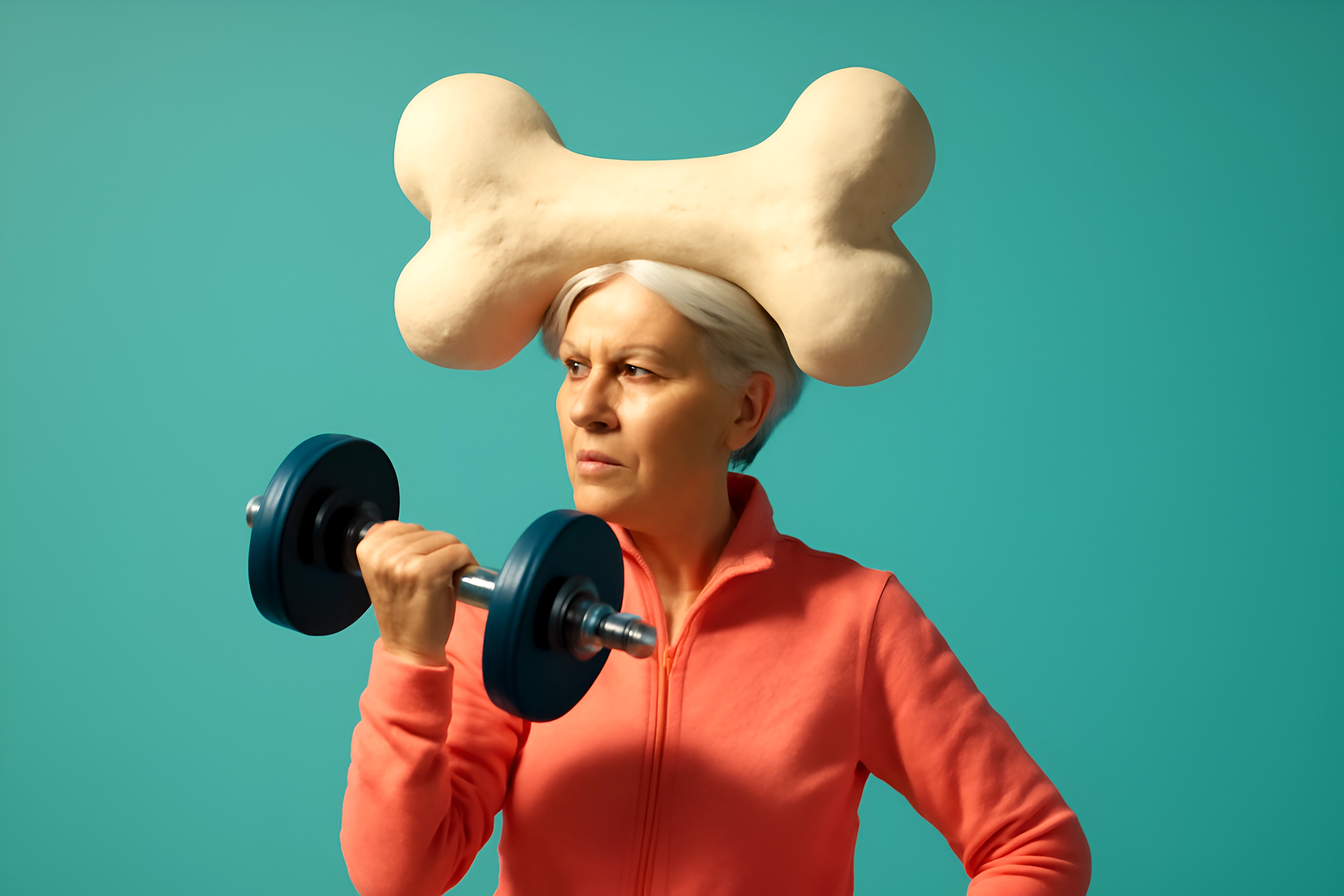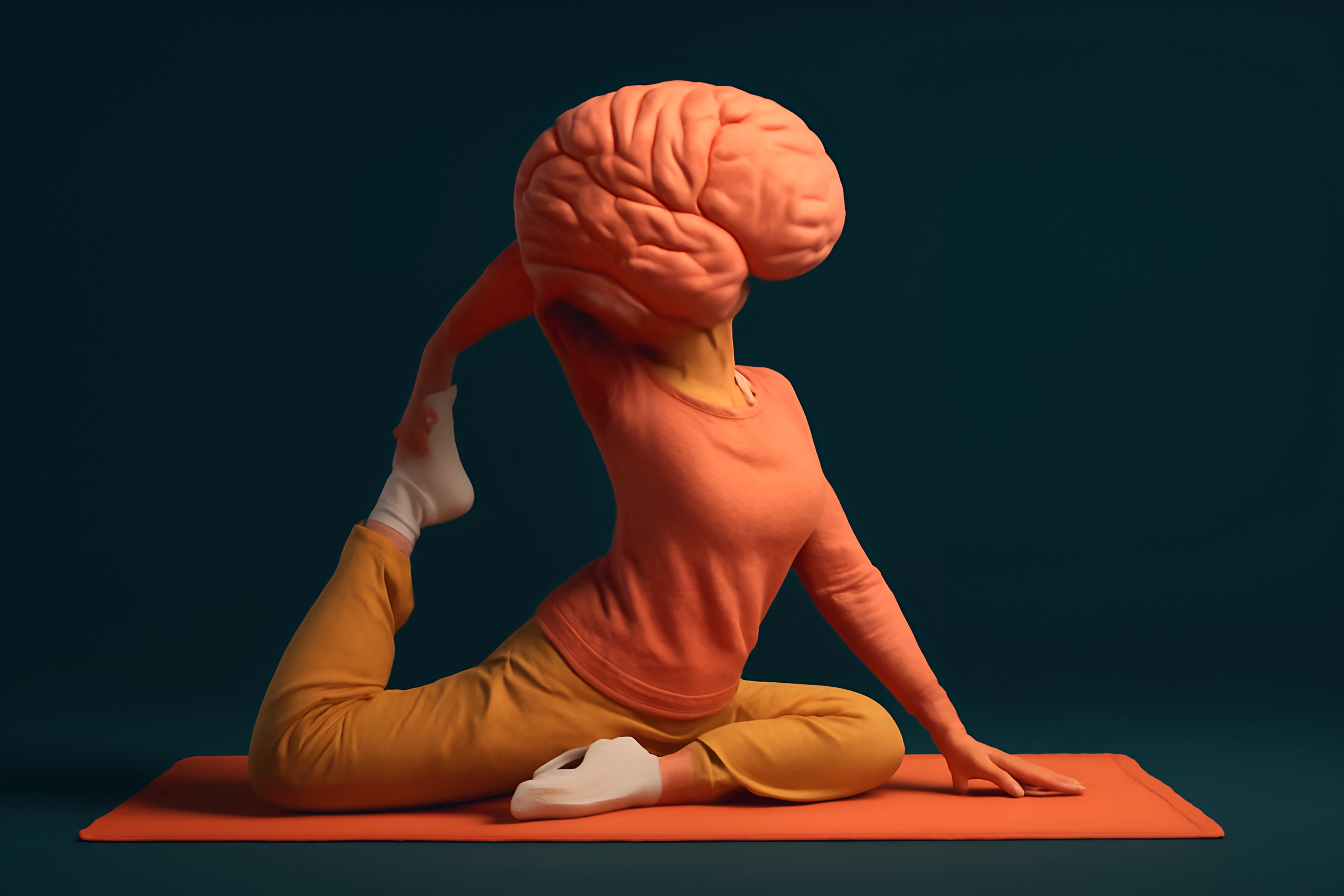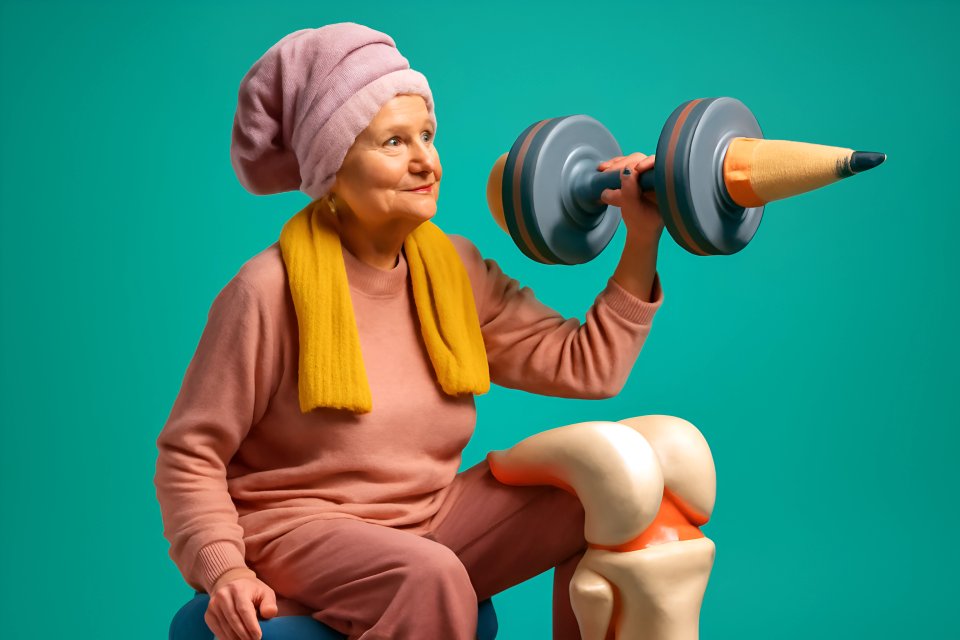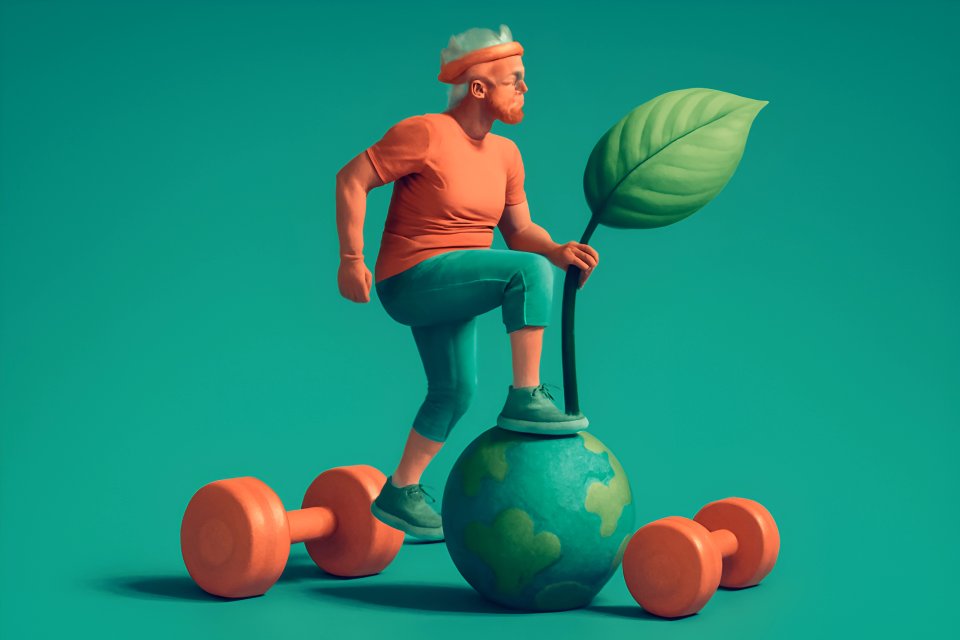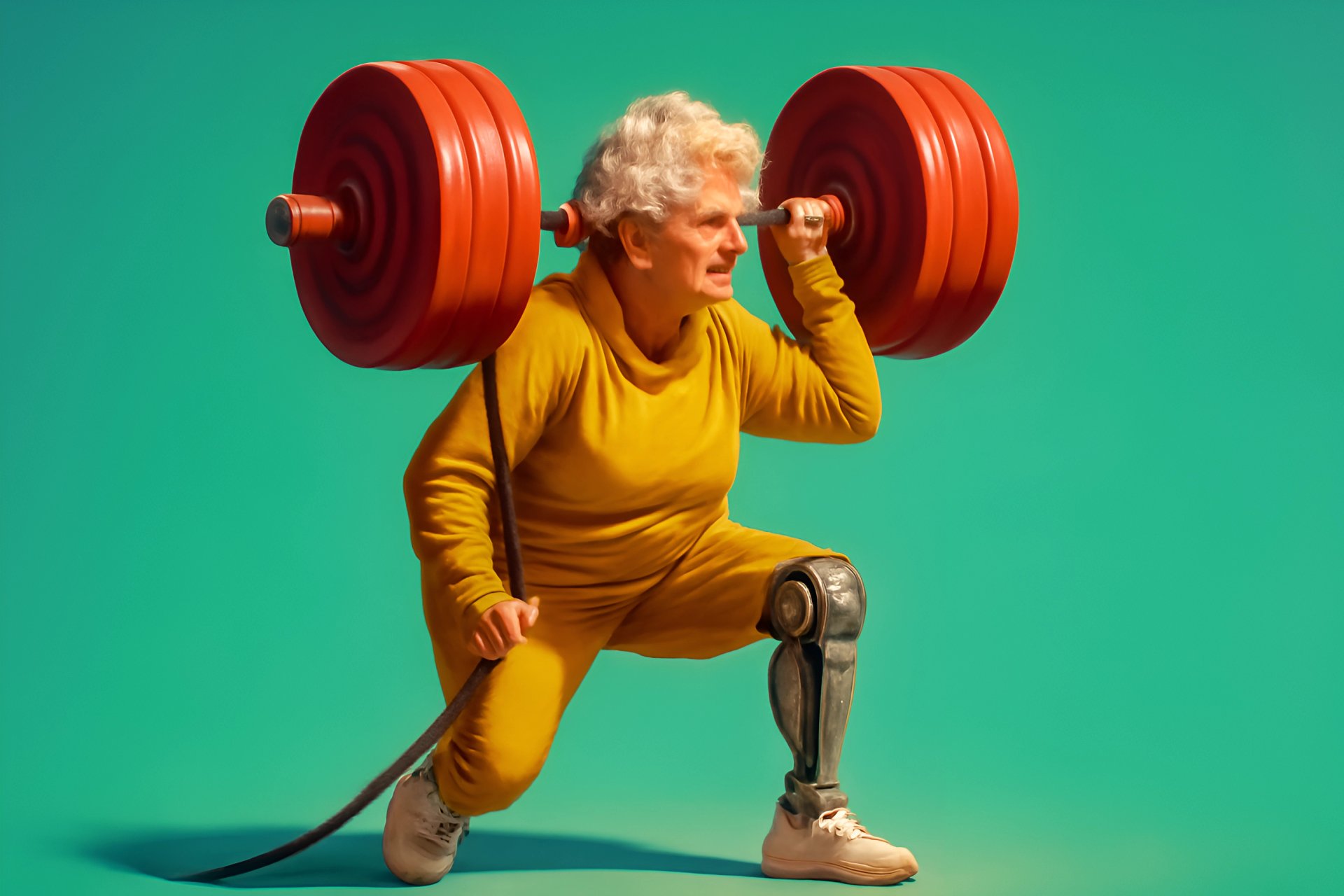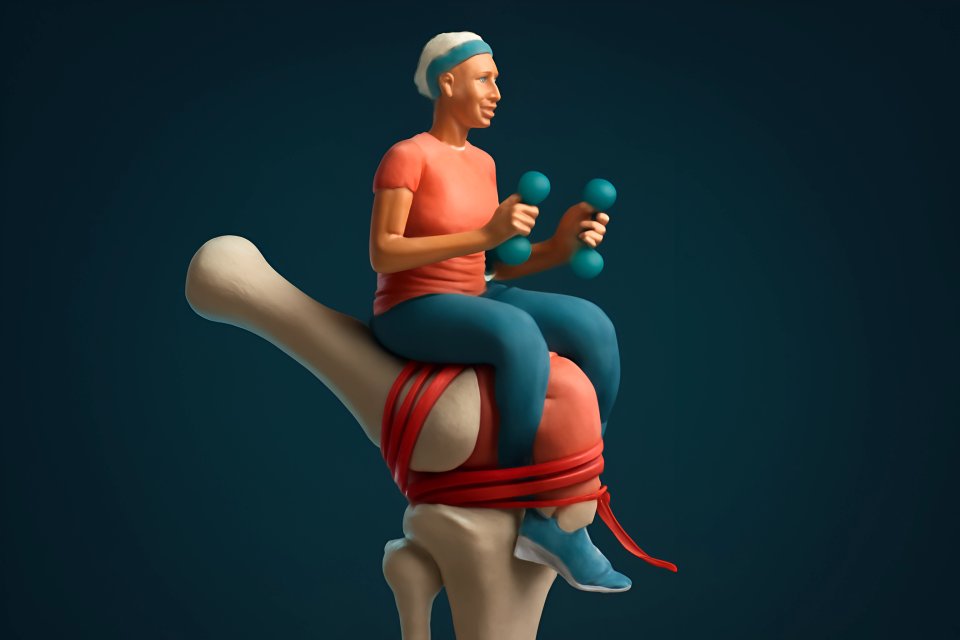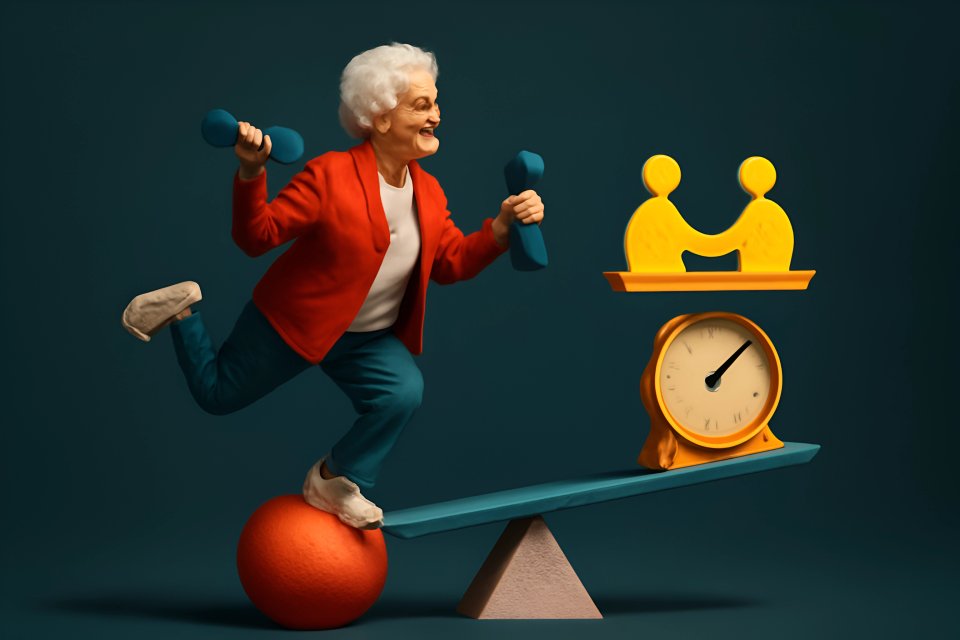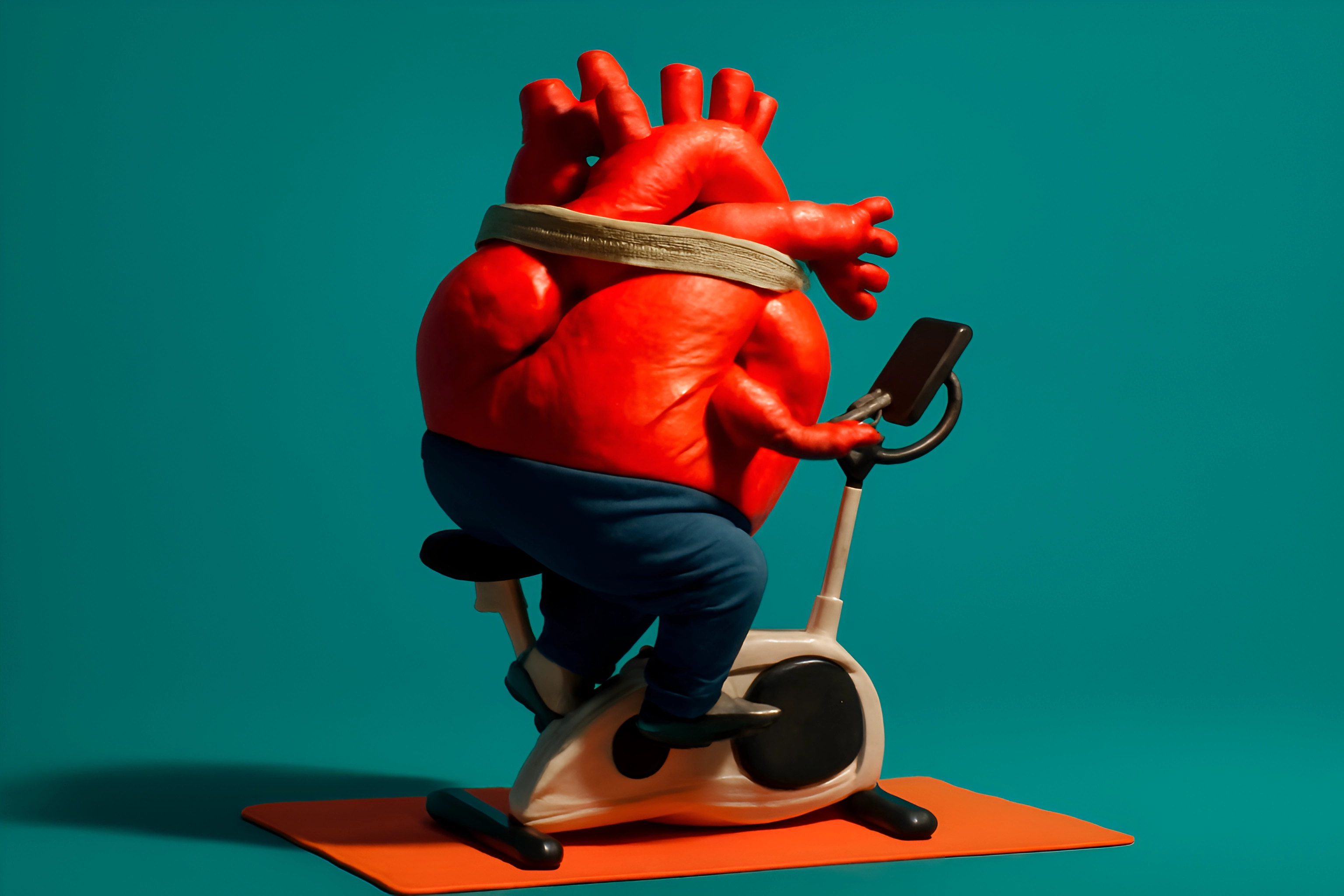
Remember that feeling? The one where you could go for a run, jump into a high-energy class, or play a sport without a second thought. But now, the idea of all that pounding on your knees and hips sounds less like fun and more like a one-way ticket to a week of aches and pains. You want to keep your heart strong and your body active, but the old ways just don’t serve you anymore.
What if the secret to a healthier heart wasn’t about pushing harder, but about moving smarter? This is where the magic of low-impact cardio comes in. It’s not a watered-down version of "real" exercise; it's a powerful, sustainable strategy designed for long-term health, vitality, and enjoyment. Finding the right low-impact cardio workouts for heart health over 50 is the key to building a fitness routine you’ll not only stick with but actually look forward to.
In this guide, we’re going to unlock the door to a world of movement that respects your body while challenging your cardiovascular system. You'll discover effective and enjoyable workouts, learn how to build a routine that fits your life, and gain the confidence to take charge of your heart health for good. Let’s begin this journey together.
Why Low-Impact Cardio is a Game-Changer After 50
Before we dive into the specific exercises, let's talk about why this approach is so incredibly effective. It’s about shifting your mindset from short-term intensity to long-term consistency. This is the foundation of a truly life-changing fitness habit.
Protect Your Joints, Strengthen Your Heart
Think of your heart as the engine and your joints as the suspension. A powerful engine is useless if the suspension is shot. High-impact exercises like running or jumping can send jarring forces through your ankles, knees, and hips—areas that become more sensitive as we age. According to experts at JGS Lifecare, gentle exercises are crucial for those with conditions like osteoarthritis, as they help maintain muscle mass and improve balance without causing pain.
Low-impact cardio delivers all the heart-pumping benefits you need—improved circulation, lower blood pressure, and a stronger heart muscle—without the punishing impact. It allows you to get your heart rate into that beneficial aerobic zone while keeping your joints safe and comfortable. This isn't about taking it easy; it's about training intelligently for the body you have today.
The Power of Consistency
What’s the single most important factor in improving your cardiovascular health? It’s not one heroic, sweat-drenched workout. It’s the workout you do consistently, week after week. High-impact routines often lead to soreness, fatigue, or even injury, forcing you to take unplanned days off and breaking your momentum.
This is where sustainable cardio exercises for seniors truly shine. Because they are gentler on the body, you can do them more frequently without feeling wiped out or risking injury. The British Heart Foundation emphasizes that building up your activity gradually is key to long-term success, and low-impact workouts make that gradual progression feel natural and achievable. Consistency is what transforms exercise from a chore into a non-negotiable part of your vibrant life.
More Than Just Your Heart
While the primary goal is a healthier heart, the ripple effects of low-impact cardio touch every aspect of your well-being. These activities are proven to boost your mood by releasing endorphins, reduce stress levels, and improve your sleep quality. They also enhance your balance and coordination, which are critical for preventing falls and maintaining independence.
Think of it as a total wellness package. You’re not just strengthening your most vital organ; you’re building a more resilient, energetic, and confident version of yourself. These cardio exercises for seniors are an investment in your total quality of life, today and for all the years to come.
The Top 5 Sustainable Low-Impact Cardio Workouts
Ready to find your new favorite way to move? Here are five fantastic, joint-friendly workouts that will get your heart pumping and put a smile on your face.
1. Brisk Walking: The Underrated Superstar
Why It Works
Never underestimate the power of a good walk. It’s accessible, it’s free, and it’s one of the most effective exercises you can do. In fact, when cardiologists were asked to name the single best workout for heart health over 50, walking was their top choice because it raises your heart rate and burns calories without stressing your joints.
Getting Started
You don't need a complex plan. Start with a simple 20-minute routine: a 5-minute easy-paced warm-up, 10 minutes at a brisk pace where you can still talk but are slightly breathless, and a 5-minute cool-down walk. That’s it.
Make it Sustainable
The key to sticking with walking is to make it enjoyable. Find a walking buddy to share the time with, listen to an engaging podcast or your favorite music, or make it a mission to explore every park and trail in your area.
Pro-Tip
Invest in a good pair of supportive walking shoes. Proper footwear is your best defense against foot and ankle issues, ensuring you can walk comfortably for miles.
2. Swimming & Water Aerobics: The Joint-Friendly Oasis
Why It Works
Stepping into a pool is like entering a zero-gravity chamber for your joints. The water’s buoyancy supports your body weight, completely eliminating impact. At the same time, the water provides gentle, consistent resistance, giving you a fantastic full-body workout that strengthens your heart, lungs, and muscles.
Getting Started
You don’t have to be an Olympic swimmer to reap the benefits. Start by swimming gentle laps for 15-20 minutes, or better yet, join a beginner’s water aerobics class. These classes are fun, social, and designed for all fitness levels.
Make it Sustainable
Focus on what you enjoy most. If you love the quiet, meditative rhythm of swimming laps, make that your focus. If you thrive on the energy and camaraderie of a group, find a water aerobics class that fits your schedule.
Pro-Tip
Don't worry if you're not a strong swimmer. In most water aerobics classes, your feet remain on the pool floor, or you use flotation devices for support.
3. Cycling (Stationary or Outdoor): A Smooth Ride to a Stronger Heart
Why It Works
Cycling is a phenomenal cardiovascular workout that builds serious leg strength and endurance with absolutely zero impact. The smooth, circular motion is incredibly kind to your knees and hips, making it a perfect choice for anyone with joint sensitivities.
Getting Started
If you're using a stationary bike, begin with a 15-minute session, alternating between a few minutes of easy pedaling and a minute of slightly higher resistance. For outdoor cycling, choose a flat, safe bike path or a quiet neighborhood to build your confidence.
Make it Sustainable
Make your ride an event. Set up your stationary bike in front of the television and catch up on your favorite show. Or, plan a weekly scenic ride with a friend, ending at a local coffee shop as a reward.
Pro-Tip
Proper bike fit is crucial. Adjust the seat height so that your leg has a slight bend at the bottom of the pedal stroke. This simple adjustment protects your knees from strain.
4. Elliptical Training: A Full-Body, No-Impact Glide
Why It Works
The elliptical machine was designed to mimic the motion of running without any of the jarring impact. Your feet never leave the pedals, creating a smooth, gliding motion that’s easy on the joints. Because you use the handles to engage your arms, you get a fantastic upper and lower body workout simultaneously, leading to a more efficient calorie burn.
Getting Started
Hop on and try a simple 15-minute interval routine. Go for 3 minutes at an easy, conversational pace, then increase the resistance or pace for 1 minute to get your heart rate up. Repeat this cycle for the duration of your workout.
Make it Sustainable
Don't just stare at the wall! Most ellipticals come with pre-programmed workouts like "hill climb" or "intervals" that automatically change the resistance for you. This variety keeps things interesting and prevents your workout from feeling monotonous.
Pro-Tip
Actively push and pull the handles instead of just resting your hands on them. Engaging your upper body is the secret to maximizing the machine's full-body benefits.
5. Tai Chi: The Meditative Mover
Why It Works
Often described as "meditation in motion," Tai Chi is a gentle, flowing practice that combines slow, deliberate movements with deep breathing. It has been shown to improve heart function, lower blood pressure, and dramatically enhance balance and flexibility. It’s a workout for your body and your mind.
Getting Started
The best way to learn Tai Chi is from an instructor who can guide you through the forms. Look for a beginner's class at a local community center or find a reputable, highly-rated beginner's video online to follow along at home.
Make it Sustainable
Embrace the mental health benefits as your primary motivator. Many people stick with Tai Chi not just for the physical results, but for the profound sense of calm and stress reduction it provides. For a deeper dive, you can explore how to combine Tai Chi with mindful meditation for stress relief.
Pro-Tip
This is the perfect choice for anyone who dislikes the feeling of traditional "cardio." Tai Chi proves that you don't have to be out of breath to give your heart a powerful, healthy workout.
Building Your Sustainable Weekly Cardio Routine
Having a list of great workouts is one thing; turning them into a consistent routine is another. Here’s how to create a simple, effective plan you can stick with.
How Often Should I Exercise?
The American Heart Association and the British Heart Foundation both recommend a powerful target: 150 minutes of moderate-intensity aerobic exercise per week. That number might sound big, but don't be intimidated. You can break it down into manageable, bite-sized pieces.
Think of it as 30 minutes, 5 days a week. Or, if you're short on time, you can even split it into two 15-minute sessions in a day. The goal is to make it fit your life, not the other way around.
Sample Weekly Schedule (A Visual Aid)
Here is a sample schedule to show you how easy it is to mix and match activities to keep things fresh and work your body in different ways. This is just a template—feel free to customize it based on the activities you enjoy most!
| Day | Activity | Duration | Notes |
|---|---|---|---|
| Monday | Brisk Walk | 30 mins | Listen to your favorite podcast. |
| Tuesday | Rest or Gentle Stretching | - | Active recovery is important. |
| Wednesday | Stationary Cycling | 20 mins | Watch a show while you pedal. |
| Thursday | Water Aerobics Class | 45 mins | Enjoy the social aspect! |
| Friday | Rest | - | Let your body rebuild. |
| Saturday | Walk in a Park | 45 mins | Go with a friend or family member. |
| Sunday | Tai Chi | 15 mins | Use an online video to guide you. |
The Golden Rule: Listen to Your Body
This is the most important rule of all. Your body is your best coach. It’s essential to learn the difference between the gentle fatigue of a good workout and the sharp, stabbing signal of pain. Rest days are not lazy; they are productive days when your muscles repair and get stronger.
If something hurts, stop. If you feel overly tired, take an extra rest day. A sustainable routine is one that honors your body's signals, ensuring you can stay active and injury-free for the long haul.
Safety First: Essential Tips for Exercising Over 50
Before you jump in, let’s cover a few non-negotiable safety rules to ensure your fitness journey is a positive one.
Always consult your doctor before beginning any new exercise program. This is especially important if you have pre-existing health conditions, such as heart disease, diabetes, or high blood pressure. Your doctor can help you create a plan that is safe and effective for your specific needs.
Warm-Up and Cool-Down
Never skip your warm-up or cool-down. A 5-minute warm-up, like marching in place or doing gentle arm circles, prepares your muscles and heart for activity. A 5-minute cool-down, consisting of a slower pace and gentle stretching, helps your heart rate return to normal and improves flexibility.
Stay Hydrated
Drink water before, during, and after your workout, even if you don't feel thirsty. Proper hydration is crucial for regulating your body temperature and keeping your muscles working efficiently. Dehydration can happen more quickly as we age, so make it a priority.
Know the Warning Signs
Pay attention to your body's signals. Stop exercising immediately and seek medical attention if you experience chest pain or pressure, unusual shortness of breath, dizziness or lightheadedness, or pain in your arms, neck, or jaw. To learn more about building a safe and effective routine, you can get great advice on mastering sustainable low-impact workouts for seniors.
It's Your Journey, Your Pace
Let’s be clear: the goal here is not to become a marathon runner overnight or to look like you did at 25. The goal is to feel strong, vibrant, and in control of your health. Sustainable, low-impact cardio is the smartest, kindest, and most effective path to achieving long-term heart health and a life full of energy.
It’s about taking that first step, whether it’s a walk around the block or a dip in the local pool. It’s about enjoying the movement, celebrating your consistency, and investing in a healthier, more vibrant you. Your heart will thank you for it.
What's your favorite way to get your low-impact cardio in? Share your tips and experiences in the comments below.


